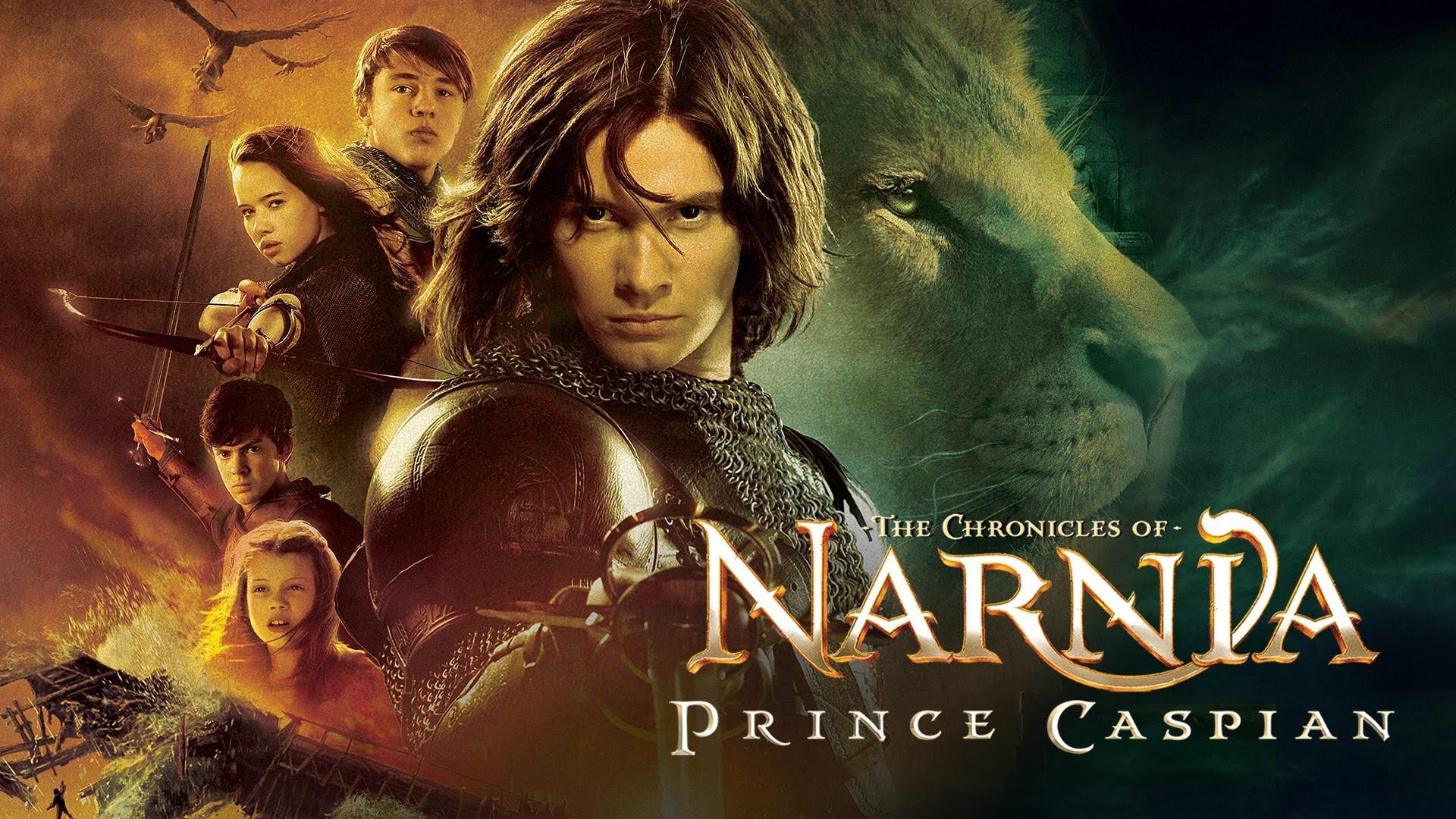The Chronicles of Narnia: Prince Caspian (2008)

“The Chronicles of Narnia: Prince Caspian,” released in 2008 and directed by Andrew Adamson, is an epic fantasy film that serves as the second installment in the Narnia film series and the fourth book adaptation in C.S. Lewis’s beloved Chronicles of Narnia series. Building on the success of its predecessor, “The Lion, the Witch and the Wardrobe,” this film delves deeper into the rich world of Narnia, expanding its scope with new characters, intricate political intrigue, and grand battles. This essay explores the film’s plot, characters, thematic elements, direction, and its place within the broader context of both the film series and C.S. Lewis’s literary legacy.
“Prince Caspian” picks up the narrative three years after the events of the first film. The Pevensie siblings—Peter (William Moseley), Susan (Anna Popplewell), Edmund (Skandar Keynes), and Lucy (Georgie Henley)—return to Narnia, only to find that the once vibrant and magical land has fallen into decline under the oppressive rule of the Telmarines, led by the usurper King Miraz (Sergio Castellitto). The once-peaceful land is now shrouded in fear and darkness, with its mythical creatures and inhabitants in hiding.
The central plot revolves around Prince Caspian (Ben Barnes), the rightful heir to the Narnian throne, who has been raised in exile by the Telmarines. Upon discovering his true heritage and the existence of the Old Narnia, Caspian seeks to reclaim his kingdom and restore it to its former glory. The Pevensies, guided by the prophecy that foretells their role in Narnia’s salvation, join forces with Caspian and the remnants of the Narnians in a battle against Miraz’s forces.
The film’s narrative structure alternates between the Pevensies’ quest to aid Caspian and their personal struggles as they navigate the transformed Narnian landscape. The story balances action-packed sequences with moments of introspection and character development, providing a compelling mix of adventure, drama, and fantasy.
Andrew Adamson, who also directed the first film, brings a cohesive vision to “Prince Caspian,” continuing the epic and fantastical tone established in “The Lion, the Witch and the Wardrobe.” Adamson’s direction is marked by a strong emphasis on visual spectacle and emotional depth. His use of sweeping landscapes, intricate set designs, and dynamic action sequences contributes to the film’s grandiose and immersive quality.
The visual style of “Prince Caspian” is characterized by its darker and more mature tone compared to its predecessor. The film features extensive use of CGI to bring the magical creatures and fantastical elements of Narnia to life. The battle scenes are particularly notable for their scale and intensity, with elaborate choreography and special effects creating a sense of epic conflict and heroism.
The cinematography, by Dante Spinotti, complements Adamson’s direction with its dramatic use of light and shadow. The film’s visual aesthetics effectively capture the contrast between the natural beauty of Narnia and the oppressive rule of the Telmarines, enhancing the narrative’s thematic contrasts.
The performances in “Prince Caspian” are integral to the film’s emotional and dramatic impact. Ben Barnes’s portrayal of Prince Caspian brings a sense of nobility and determination to the character. Barnes captures Caspian’s internal conflict and growth as a leader, making him a compelling and sympathetic figure.
The returning cast members—William Moseley, Anna Popplewell, Skandar Keynes, and Georgie Henley—continue to develop their roles as the Pevensie siblings. Moseley’s portrayal of Peter reflects the character’s struggle with leadership and responsibility, while Popplewell’s Susan grapples with her doubts and fears. Keynes and Henley deliver strong performances as Edmund and Lucy, respectively, with their characters providing key emotional moments and insights.
Sergio Castellitto’s performance as King Miraz adds a layer of menace and complexity to the antagonist. Castellitto’s portrayal captures Miraz’s ruthless ambition and the threat he poses to Narnia, providing a strong counterpoint to the protagonists’ quest.
Supporting characters, including the noble dwarf Trumpkin (Peter Dinklage) and the valiant mouse Reepicheep (voiced by Simon Pegg), add additional depth and charm to the film. Dinklage’s performance as Trumpkin provides a mix of humor and bravery, while Pegg’s voice work as Reepicheep adds a memorable and endearing quality to the character.

“Prince Caspian” explores several themes that resonate with audiences, including the nature of leadership, the power of belief, and the struggle between tyranny and freedom. The film examines the responsibilities of leadership through the character of Prince Caspian and Peter Pevensie. Caspian’s journey to reclaim his throne and Peter’s struggle with his role as a leader highlight the complexities and challenges of guiding others.
The theme of belief and faith is also central to the film. The return of the Pevensies to Narnia and their efforts to restore it to its former glory are driven by their belief in the prophecy and their faith in the magic of the land. The film emphasizes the importance of hope and perseverance in the face of adversity.
The struggle between tyranny and freedom is embodied in the conflict between Caspian and Miraz. The film portrays the oppressive nature of Miraz’s rule and the desire of the Narnians to reclaim their land and way of life. This theme resonates with the film’s audience, providing a powerful message about the value of freedom and the fight against injustice.
The emotional impact of “Prince Caspian” is enhanced by its blend of action, drama, and fantasy. The film’s ability to balance thrilling adventure with heartfelt moments and character development creates a compelling and satisfying viewing experience.

“Prince Caspian” received generally positive reviews from critics and audiences, who praised its visual effects, performances, and expansion of the Narnian world. While some critics noted that the film’s darker tone and focus on battle scenes marked a departure from the lighter, more whimsical tone of the first film, the overall reception was favorable.
The film’s legacy is reflected in its contribution to the Narnia film series and its impact on the fantasy genre. “Prince Caspian” continued the story of the Pevensie siblings and set the stage for the final installment, “The Chronicles of Narnia: The Voyage of the Dawn Treader” (2010). The film’s exploration of new themes and characters added depth to the series and expanded the Narnian universe.

“The Chronicles of Narnia: Prince Caspian” (2008) is a grand and imaginative continuation of C.S. Lewis’s beloved series, directed by Andrew Adamson. The film’s epic scope, engaging performances, and richly detailed world-building contribute to its status as a memorable and influential entry in the fantasy genre. With its exploration of leadership, belief, and the fight for freedom, “Prince Caspian” resonates with audiences and solidifies its place within the broader Narnian saga. As a testament to the enduring appeal of Lewis’s work and the creative vision of its filmmakers, “Prince Caspian” remains a cherished film in the realm of fantasy cinema.











